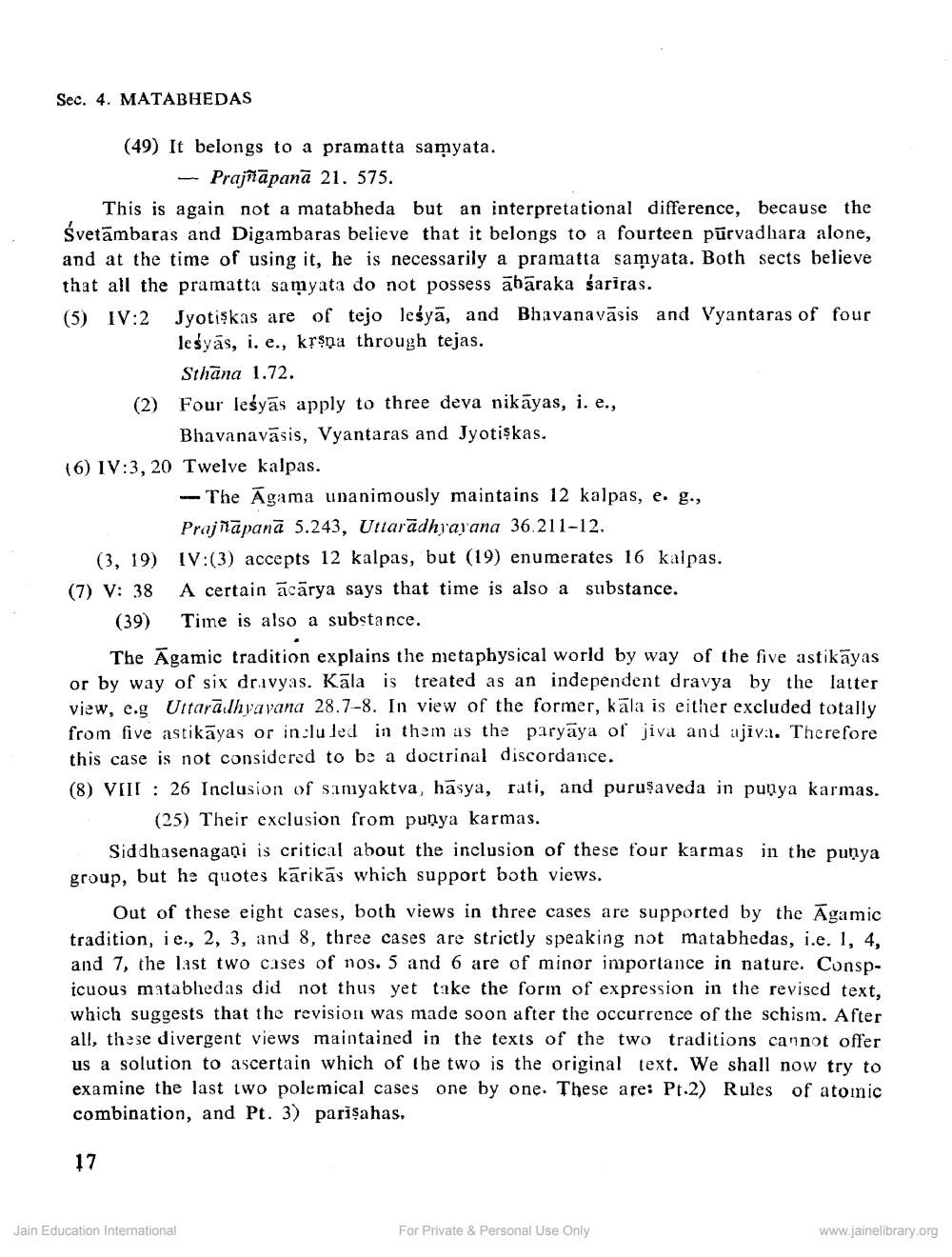________________
Sec. 4. MATABHEDAS
(49) It belongs to a pramatta samyata.
Prajnapana 21. 575.
This is again not a matabheda but an interpretational difference, because the Śvetambaras and Digambaras believe that it belongs to a fourteen purvadhara alone, and at the time of using it, he is necessarily a pramatta samyata. Both sects believe that all the pramatta samyata do not possess äbäraka sariras.
(5) IV:2
Jyotiskas are of tejo leśya, and Bhavanavasis and Vyantaras of four. lesyas, i. e., krpa through tejas.
Sthana 1.72.
(2) Four lesyas apply to three deva nikayas, i. e.,
Bhavanavasis, Vyantaras and Jyotiskas.
(6) IV:3, 20 Twelve kalpas.
-The Agama unanimously maintains 12 kalpas, e. g., Prajnapana 5.243, Uttaradhyayana 36.211-12.
(3, 19) IV:(3) accepts 12 kalpas, but (19) enumerates 16 kalpas. (7) V: 38 A certain äcärya says that time is also a substance. Time is also a substance.
(39)
The Agamic tradition explains the metaphysical world by way of the five astikāyas or by way of six dravyas. Kala is treated as an independent dravya by the latter view, c.g Uttaradhyavana 28.7-8. In view of the former, kala is either excluded totally from five astikayas or included in them as the paryaya of jiva and ajiva. Therefore this case is not considered to be a doctrinal discordance.
(8) VIII 26 Inclusion of samyaktva, hasya, rati, and purusaveda in punya karmas. (25) Their exclusion from punya karmas.
Siddhasenagani is critical about the inclusion of these four karmas in the punya group, but he quotes kärikäs which support both views.
17
Out of these eight cases, both views in three cases are supported by the Agamic tradition, ie, 2, 3, and 8, three cases are strictly speaking not matabhedas, i.e. 1, 4, and 7, the last two cases of nos. 5 and 6 are of minor importance in nature. Conspicuous matabhedas did not thus yet take the form of expression in the revised text, which suggests that the revision was made soon after the occurrence of the schism. After all, these divergent views maintained in the texts of the two traditions cannot offer us a solution to ascertain which of the two is the original text. We shall now try to examine the last two polemical cases one by one. These are: Pt.2) Rules of atomic combination, and Pt. 3) parisahas.
Jain Education International
For Private & Personal Use Only
www.jainelibrary.org




